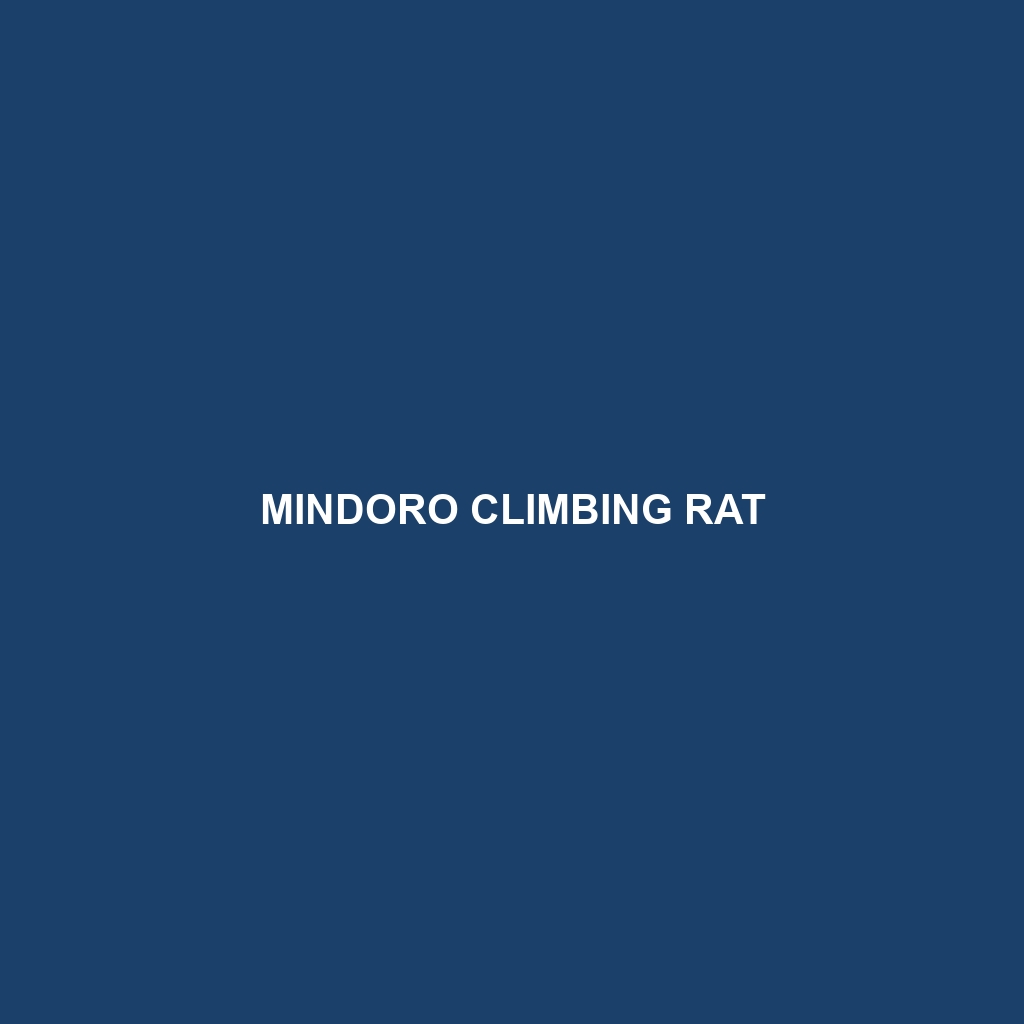Common Name: Mindoro Climbing Rat
Scientific Name: Chrotomys mindorensis
Habitat:
The Mindoro Climbing Rat is primarily found in the mountainous regions of Mindoro Island in the Philippines. This unique rodent inhabits tropical forests and prefers areas with dense vegetation and abundant tree cover, making it well-suited to arboreal living. Their habitat is characterized by a moist, warm climate that supports a rich biodiversity.
Physical Characteristics:
This species is medium-sized, typically weighing between 150 to 200 grams. The Mindoro Climbing Rat features a slender, elongated body, measuring about 25 to 30 cm in length, with a long tail that is often as long as its body. Its fur is dense and soft, exhibiting a unique coloration ranging from dark brown to olive-green, which provides excellent camouflage among the foliage. Notable physical traits include large, rounded ears, and sharp claws that aid in climbing.
Behavior:
The Mindoro Climbing Rat is predominantly nocturnal, showcasing active behavior at night. They are excellent climbers, often found foraging high in the trees. Utilized for their agility, these rodents display interesting social structures and communicate through a range of vocalizations. They construct nests out of leaves and twigs in tree hollows or among shrubbery, which serves as a safe haven from predators.
Diet:
This species primarily feeds on fruits, seeds, and young leaves, demonstrating an herbivorous diet that supports their climbing lifestyle. The Mindoro Climbing Rat plays a vital role in seed dispersal, contributing to the growth of forest flora. During periods of food scarcity, they may consume insects and other small invertebrates, showcasing adaptability in their feeding habits.
Reproduction:
Breeding typically occurs during the wet season, with gestation lasting about 30 days. A single litter can consist of 2 to 4 offspring, which are born hairless and blind. Parental care is provided primarily by the female, who nurtures her young until they are capable of independent living. They reach sexual maturity at 3 to 4 months of age, contributing to population growth during favorable conditions.
Conservation Status:
The Mindoro Climbing Rat is currently classified as vulnerable due to habitat loss from deforestation and human encroachment. Conservation efforts are essential to protect this unique rodent and its natural habitat, highlighting the need for increased awareness and preservation initiatives.
Interesting Facts:
One fascinating aspect of the Mindoro Climbing Rat is its ability to adapt to arboreal environments, which distinguishes it from other rodent species. Despite its name, this rat does not resemble typical rats, featuring remarkable climbing abilities that allow it to navigate the treetops with ease. Furthermore, it has been observed engaging in playful behavior, sometimes interacting with other species in its habitat.
Role in Ecosystem:
The Mindoro Climbing Rat plays a crucial role in its ecosystem by aiding in seed dispersal and contributing to the biodiversity of the tropical forests it inhabits. As both a prey and a herbivore, it supports the food web and helps maintain the balance of its environment. Its presence indicates a healthy ecosystem, making the conservation of its habitat vital for preserving the ecological integrity of Mindoro Island.
